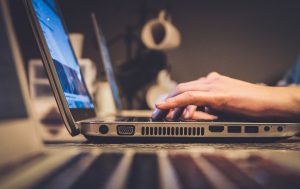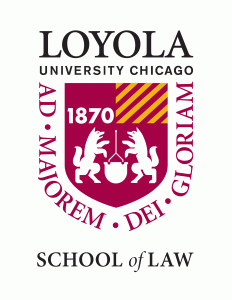The public health crisis resulting from COVID-19 thrust virtually all schools, teachers, and students into a world that relied on remote access to education, and it became clear that a significant number of students were left unconnected.
The Widening Homework Gap
Some astonishing findings have been published over the last several years regarding the “digital divide” (American’s unequal access to technology) and the “homework gap” (the inability for students to do homework without technology). In 2017, as part of the Every Student Succeeds Act requirements, the National Center for Education Statistics found that students living at or below the poverty threshold and students who are American Indian, Black, Hispanic, or living in a rural area have significantly less home-access to technology.
Most people cited the expense of broadband as the primary barrier to access or that their family did not need or have an interest in access. Rural students reported difficulty getting  access to fixed broadband service. In 2018, the Pew Research Center found that the majority of eighth-grade students rely on connected technology to complete their homework and that approximately seventeen percent of students said they were unable to complete their homework because of a lack of home internet access. The U.S. Senate’s Joint Economic Committee found that nearly 12 million students were living in homes without access to broadband in 2017.
access to fixed broadband service. In 2018, the Pew Research Center found that the majority of eighth-grade students rely on connected technology to complete their homework and that approximately seventeen percent of students said they were unable to complete their homework because of a lack of home internet access. The U.S. Senate’s Joint Economic Committee found that nearly 12 million students were living in homes without access to broadband in 2017.
This problem worsened when in-person learning was suspended. Delivering instruction remotely to students without access to technology was one of, if not the most, challenging components of remote instruction for teachers and students. Although the homework gap existed before the school closures, the disparity became much worse during remote learning because of the increased reliance on web-based communication and assignments. Some school districts were not able to develop online lessons and instead sent home packets of paper learning materials or recordings of lectures on DVDs or flash drives. Even in districts where a substantial number of students were connected, many school leaders faced difficult equity issues around providing some students with synchronous, online instruction while other students were left to work through self-guided packets.
State and Local Efforts
Surprisingly, private Internet Service Providers (“ISP”) and telecom companies offered significant help while schools were closed. Many telecom companies provided mobile hotspots to students and schools at no or reduced cost to keep students connected anywhere they can get a phone signal. Private ISPs also helped keep students online by lowering or eliminating their costs of service for fixed broadband service. Unfortunately though, these special offers were often limited to “low-income” households where the family had no outstanding previous balance with the company. These conditions created an obstacle for many families seeking an equitable education for their children.
Many school districts took it upon themselves to keep students connected. A number of schools distributed one-to-one devices so students had a device at home. Schools also found creative ways to mitigate the connectivity problem such as sending mobile hotspots on buses into the community or distributing mobile hotspots directly to students. Some even found a way to emit a Wi-Fi signal over TV whitespace. These solutions may have been sufficient for a short-term emergency but will likely not be sustainable over a long period. Because there is a reasonable likelihood that schools will be doing some sort of remote learning throughout the Fall and that the homework gap will exist after, as it did before the school closure, schools will need permanent solutions to the connectivity problems faced by many students.
All fifty states have created some type of task force, commission, or authority to coordinate broadband expansion. While these committees are charged with identifying problems and creating solutions for broadband access state-wide, several states stand out as models for broadband expansion. Efforts that some states have already taken to improve infrastructure include appropriating grant money for broadband infrastructure, partnering with private industry to subsidize infrastructure in difficult  service areas, and installing broadband conduit in new transportation projects. Some states have developed grant programs to increase public broadband networks in communities with low levels of broadband access. Others have developed hotspot lending programs with libraries and increased bandwidth and connection speeds for schools to allow more students to connect at once. Some municipalities and tribes have even created a public ISP that generally provides higher quality broadband access at lower prices.
service areas, and installing broadband conduit in new transportation projects. Some states have developed grant programs to increase public broadband networks in communities with low levels of broadband access. Others have developed hotspot lending programs with libraries and increased bandwidth and connection speeds for schools to allow more students to connect at once. Some municipalities and tribes have even created a public ISP that generally provides higher quality broadband access at lower prices.
Federal Broadband Intervention
Many education advocates are asking Congress and the Federal Communication Commission (“FCC”) to help solve the issue. The FCC is in charge of the E-Rate program which allocates money to schools and libraries for telecommunication connections. This program would be an ideal way to fund at-home internet connections for students, but the Chairman of the FCC argues that the law, as written, does not permit that use. It is estimated that the E-Rate program had the authority to allocate $1.5 billion dollars before its fiscal year ended in June but lacked the statutory authority to provide funds to expand off-campus connections. The funding was available, but the agency did not ask Congress for the additional authority to put the dollars to the highest and best use. The FCC had conducted a pilot program in 2011 and 2012 to determine if off-premises access should be eligible for the program, but the program did not produce any reported results. The Chairman has also said that he would instead support parallel legislation that is solely focused on distance-learning connectivity.
The FCC does provide funding through the Rural Digital Opportunity Fund, which is set to spend over $20 billion over the next ten years to expand rural broadband access. This allocation will help, but the Fiber Broadband Association claims that a plan to get fiber-optic networks to 90 percent of U.S. households will cost an additional $70 billion. The FCC has also helped through the school closures by clarifying that schools and libraries could provide their Wi-Fi signals for the community although their facilities were closed. They have also secured promises from broadband providers not to terminate service for non-payment during the crisis.
Some members of Congress are also working to expand broadband access through legislation. One Democratic bill in the House of Representatives would appropriate $4 billion to create an “Emergency Broadband Connectivity Fund” to subsidize internet access and increase aid for Wi-Fi hotspots. Another House bill focuses primarily on educational access and would create a fund of $2 billion for schools and libraries to buy Wi-Fi hotspots, routers, and internet-connected devices.
Acknowledging the Issue
Schools made their way through the last quarter of the academic year the best way they could. Some found creative ways to provide access for their students while others relied on antiquated methods of instruction like paper packets. Going forward, schools must continue to determine the limits of the students’ connections and find practical ways to resolve any deficiencies. This may mean that schools will need to work one-on-one with families to resolve a total lack of connection and coach teachers to develop lessons that reduce bandwidth use. While the federal government can certainly help, the responsibility ultimately falls on schools and states to provide a free, appropriate, public education. Such a valuable education obviously now includes remote connectivity.
Timothy Higus is a student at Loyola University Chicago School of Law and wrote this blog post as part of the Education Law Practicum.

